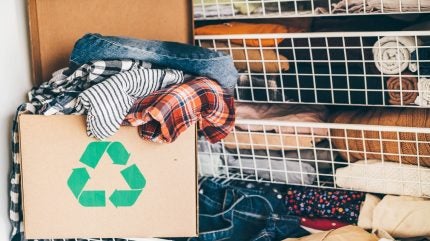
The amendment on the waste framework is designed to enhance circular economy practices across the EU textile sector by encouraging innovation and more sustainable methods in both industry and consumer behaviours while also strengthening the EU’s competitive edge.
In the year 2020, the European Union recorded a production of 6.95 million tonnes of textile waste, which averages to about 16kg per person. Out of this substantial amount, only 1.95 million tonnes underwent separate collection processes.
The Waste Framework Directive, aligned with the EU Strategy for Sustainable and Circular Textiles, seeks to enhance the collection, sorting, reuse, and recycling of textiles.
According to the EC, this initiative will generate local employment, reduce costs for consumers, and help lessen the environmental effects of textile production.
This proposed modification is in line with the commitments outlined in the EU Strategy for Sustainable and Circular Textiles. It aims to standardise EPR regulations for textiles and to create financial motivations that encourage the production and consumption of textiles that are both sustainable and adhere to circular economy principles.
A central aspect of the updated directive is its uniform regulations that will elevate sustainability for both enterprises and consumers, as well as standardise the market for second-hand and waste textiles.
Under the revised WFD, each Member State will establish an Extended Producer Responsibility (EPR) scheme for textiles and footwear.
Textile producers within these sectors will be accountable for managing post-consumer textiles. This responsibility is intended to motivate producers to create more durable textile goods that are simpler to reuse, repair, and recycle. Their contributions will also promote investments in separate collection systems, sorting facilities, reuse operations, and recycling infrastructure, thereby aiding in establishing a circular economy for textiles.
The provisional agreement provides for a level playing field, including all companies in the scope of extended producer responsibility schemes. Under this harmonised framework, all companies, including smaller ones, would have access to necessary resources and infrastructure for proper waste textile treatment.
The updated regulations also address illegal exports of textile waste. By distinctly defining what qualifies as “waste” versus “reusable” textiles, sorting processes must occur before any shipment of used textiles. This provision strengthens new measures ensuring that textile waste is only exported under conditions that guarantee environmentally sustainable management.
Co-legislators agreed to address overgeneration of waste textile and ultra-fast and fast fashion practices, to prevent discarding of textile products before they reach their potential lifetime. Member states may adapt fees paid by producers according to the length of use of textile products and their durability.
The European Parliament and Council are now required to formally ratify the revised Directive before it becomes effective.
Following its publication in the Official Journal of the EU, it will become effective after 20 days. Subsequently, Member States must incorporate the directive into their national laws within 20 months from its commencement date.
Polish Climate and Environment Minister Paulina Hennig-Kloska said: “Today’s agreement on waste textile marks a significant step towards a robust, circular, and competitive EU economy, while upholding the polluter pays principle. Additionally, the EU is for the first time setting ambitious food waste reduction targets, for more sustainable food systems in the EU.”
Environmental organisations have previously pointed out that the greatest contribution to global warming from the fashion and textiles industry occurs during the production phase, urging greater attention to the beginning of the supply chain.



